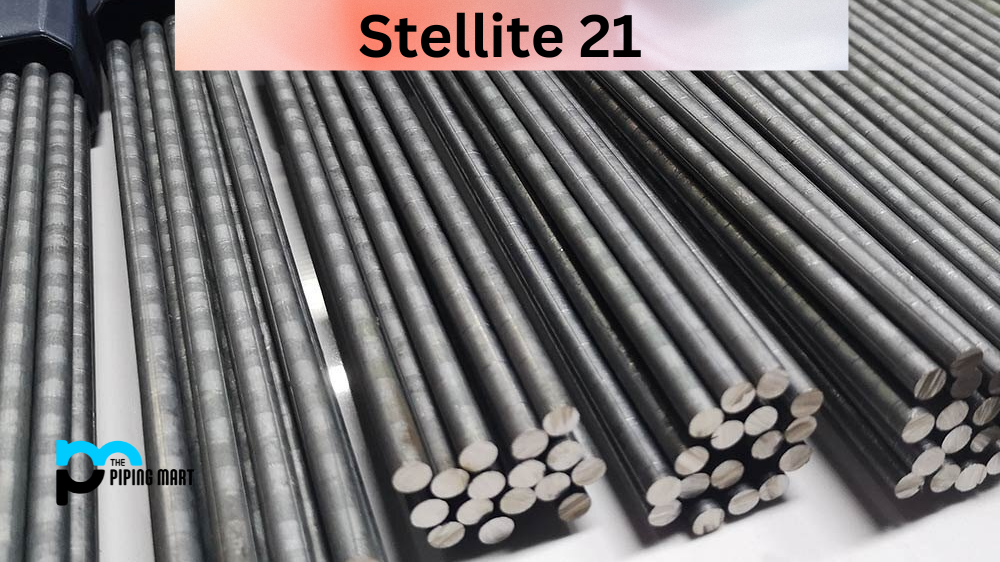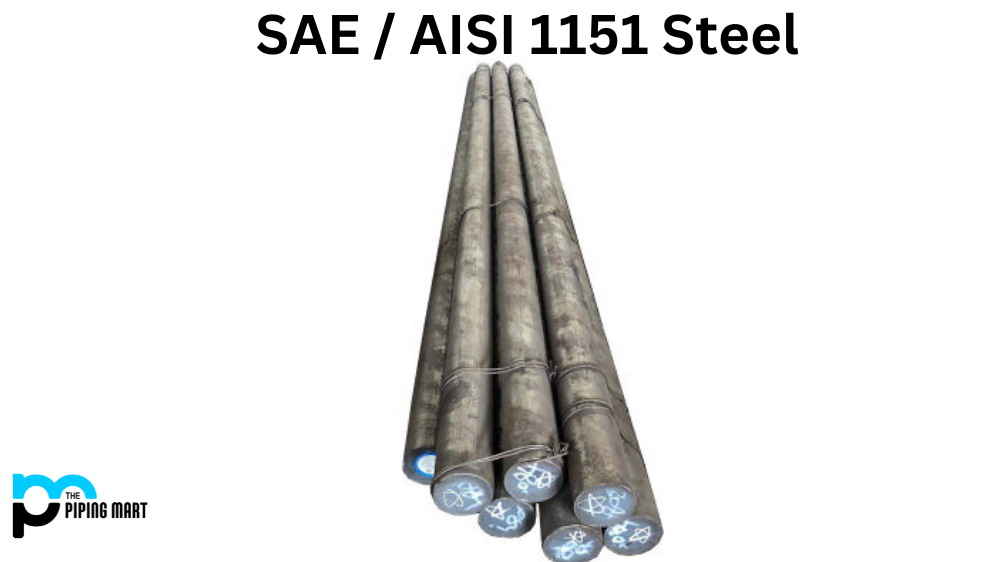Stellite 21 is a non-magnetic, cobalt-based alloy widely used in the aerospace, chemical, and oil and gas industries. This superalloy is known for its high strength, excellent resistance to wear and corrosion, and exceptional hardness. This blog post dives deeper into Stellite 21’s composition, physical and mechanical properties, hardness, heat treatment, welding methods, and corrosion resistance.
Stellite 21 Composition
Stellite 21 comprises 12-14% chromium, 28-32% molybdenum, and 3-5% tungsten. It also contains 1.5-3% silicon, 0.5-2% iron, and small amounts of carbon, manganese, nickel, and copper. This unique combination of alloying elements provides Stellite 21 with its outstanding resistance to wear and corrosion.
| Element | Amount |
|---|---|
| Cobalt (Co) | 60% |
| Chromium (Cr) | 27% |
| Molybdenum (Mo) | 5.5% |
| Iron (Fe) | 3% |
| Nickel (Ni) | 2.5% |
| Carbon (C) | 0.3% |
Stellite 21 Physical Properties
The density of Stellite 21 is 8.42g/cm3. It has a melting point of 1330℃ and a boiling point of 3030℃. This alloy is non-magnetic and has a coefficient of thermal expansion of 16.8 x 10^-6/K. It is also highly resistant to oxidation and can withstand high temperatures up to 900℃.
Stellite 21 Mechanical Properties
Stellite 21 is known for its high strength and toughness. Its tensile strength is 1200 MPa, with a yield strength of 780 MPa. Its elongation at break is 10%, with a hardness of 47 HRC. It also has a high fatigue strength and can withstand repeated cycles without cracking.
| Rp0.2 (MPa) | Rm (MPa) | Impact KV (J) |
Elongation A (%) |
A Z (%) | Delivery | Hardness HB |
|---|---|---|---|---|---|---|
| 316 (≥) | 578 (≥) | 32 | 31 | 12 | Solution & Aging, Ann, Ausaging, Q+T | 442 |
Stellite 21 Hardness
Stellite 21 has an exceptional hardness, making it suitable for applications that require wear resistance. Its hardness ranges from 45 to 53 HRC depending on the heat treatment. It is ideal for cutting tools, valve seats, bearings, and high-temperature applications.
Stellite 21 Heat Treatment
Stellite 21 can be heat treated to improve its mechanical and physical properties. The recommended heat treatment process is to preheat the material at 870-980℃, harden at 1100-1175℃ and temper at 650-750℃. This process improves the strength, toughness, and wear resistance of Stellite 21.
Stellite 21 Welding
Stellite 21 can be welded using various methods, such as TIG, MIG, and plasma welding. However, the correct welding parameters must be used to avoid cracking and porosity. The recommended method is TIG welding with a filler wire of Stellite 25.
Stellite 21 Corrosion Resistant
Stellite 21 has excellent resistance to corrosion in harsh environments such as hot sulfuric acid, hydrochloric acid, and saltwater. Its high chromium and molybdenum content provide superior pitting and crevice corrosion resistance. This alloy is also resistant to stress, corrosion, cracking, and erosion.
Conclusion
Stellite 21 is a superalloy with exceptional properties suitable for various industrial applications. Its unique composition of alloying elements gives it high strength, toughness, hardness, and corrosion resistance. Stellite 21 also offers excellent wear resistance, making it an ideal choice for cutting tools, valve seats, bearings, and high-temperature applications. With the proper heat treatment and welding methods, Stellite 21 can withstand harsh environments, making it an excellent choice in the aerospace, chemical, and oil and gas industries.

Hey, I’m Krutik, a casual blogger expert in the metal industry. I am passionate about providing valuable information to my readers. With a background in engineering and construction, I like playing Cricket & watching Netflix shows in my free time. Thank you for visiting my blog, and I hope you find my information helpful!




